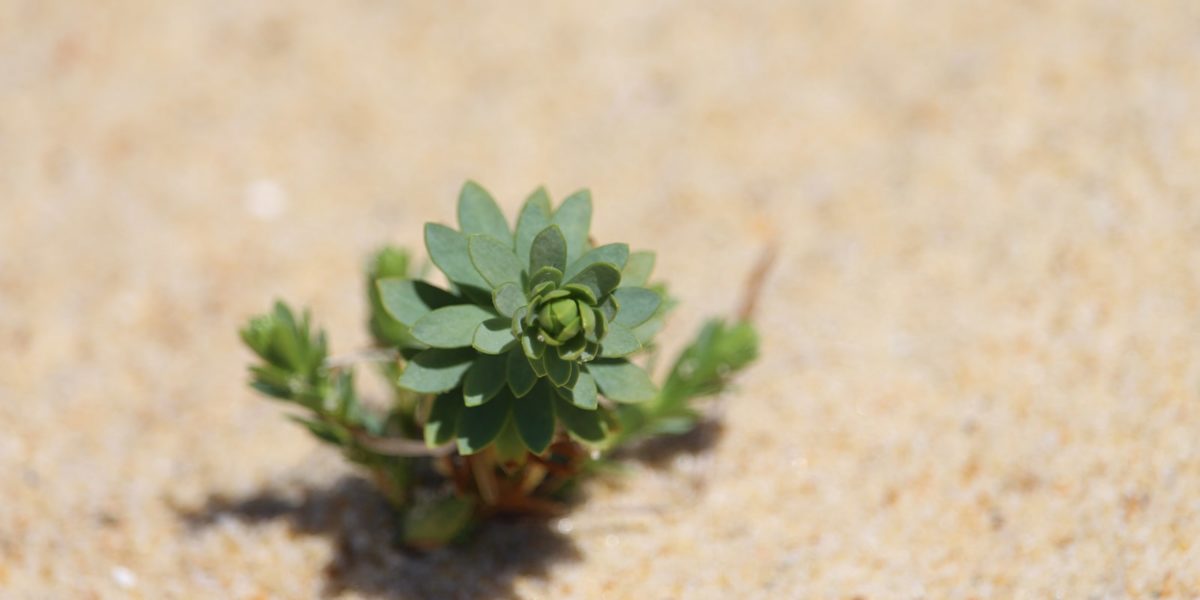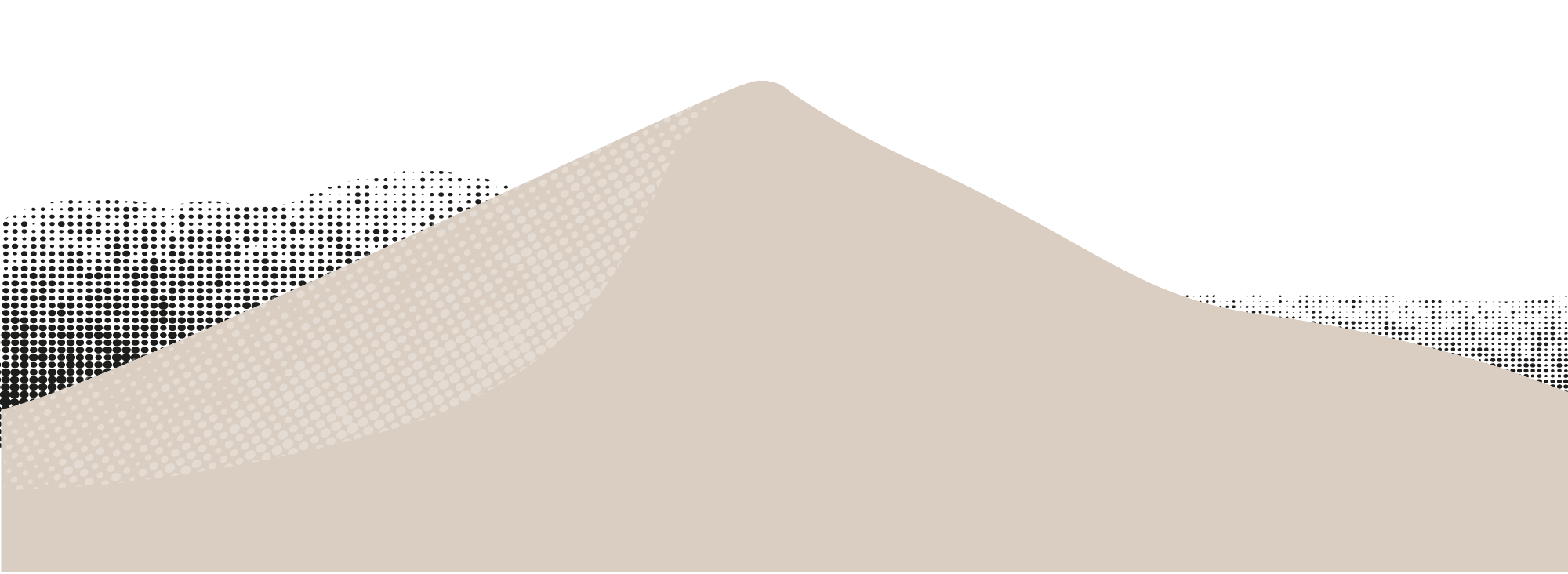Unsuspected biodiversity
More than 6,800 hectares are classified and protected under the Environmental Code. They form a mosaic of habitats favorable to the development of varied biodiversity.
To adapt to the difficult conditions of these natural environments, plant and animal species demonstrate complex and surprising adaptations, strategies and mechanisms.
If the Dune du Pilat has a desert appearance at its summit, it nevertheless shelters a varied fauna and flora. At its foot, fresh water resurgences allow the development of vegetation usually present at the edge of watercourses: yellow iris (Iris pseudacorus), reeds (Phragmites communis), willow (Salix atrocinerea)... This vegetation shows the tolerance of plants and their adaptation between semi-lacustrine, marine and dune environments.
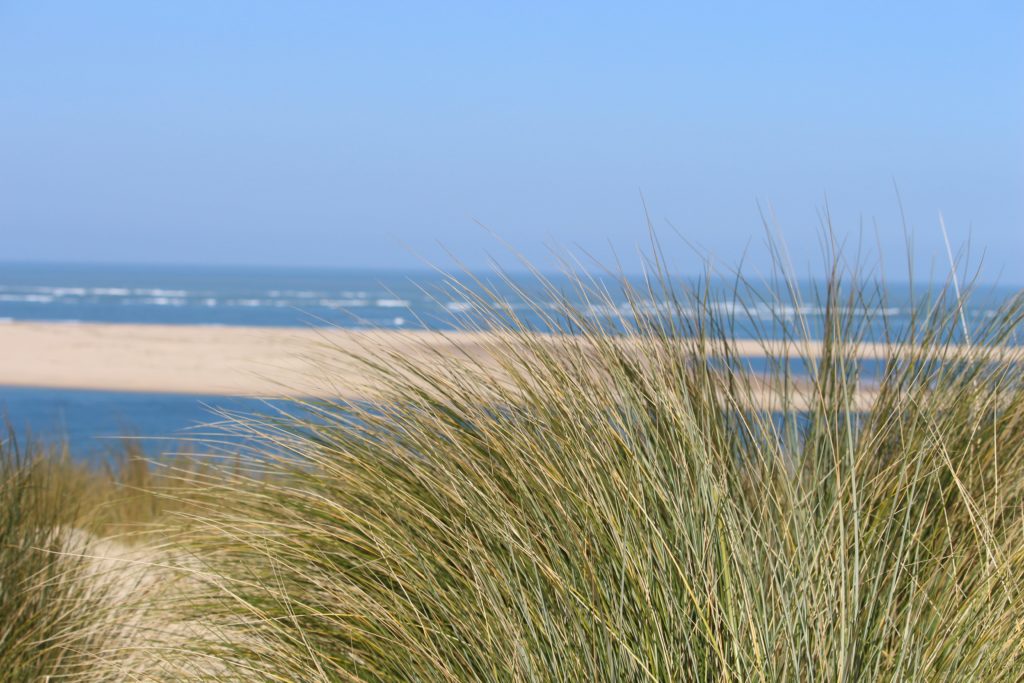
Oyat
Common name : oyat
Latin name: Ammophila arenaria
Family: Poaceae
Flowering: From the month of May
Vegetative characters: Oatmeal is a bushy green-yellow grass 60 to 120 cm high, visible all year round. This plant is resistant, able to develop in a hostile, arid and unstable environment. Its very important root system captures the slightest trace of moisture. Its leaves roll up on themselves to limit water loss in hot weather. Thanks to its roots, which infiltrate deep into the sand and reinforce the structure of the dunes, the marigold fixes the dunes. It also serves as a shelter for the vegetation behind it by protecting it from the winds.
At the end of the XVIIIe century, it is this grass that has slowed the advance of the coastal dunes. Its scientific name "Ammophila Arenaria" comes from the Greek ammos and latin arena which literally translate “who loves the sand”. In the Aquitaine region, it is also called “Gourbet”.
Thyme leaf flax
Common name : Thyme leaf flax
Latin name: Linaria thymifolia
Family: Scrofulariaceae
Flowering: from june to august
Vegetative characters: National protection, endemic. A few centimeters high, this small perennial has thick, oval green leaves. Its cluster flowers are bright yellow mixed with orange. The thyme leaf flax is an endemic species of the South Atlantic coast, which does not grow anywhere else in the world.

Its leaves are very thick, which allows it to constitute a reservoir of water.

Panicaut maritime
Common name : Panicaut maritime
Latin name: Eryngium maritimum
Family: Apiaceae
Flowering: from June to September
Vegetative characters: With its metallic blue flowers, the maritime panicaut is easily recognizable. It is the emblem of the Conservatoire du littoral. To survive in a dune environment, this plant species has a long and thick root that allows it to resist the wind and ensures a supply of water to the foliage. Its leaves are leathery and thorny, beware of anyone who tramples it on.
Even if this floral species is abundant on French coasts, it is declining due to the overcrowding of the littoral.
Immortal of the dunes
Common name : Immortal of the dunes
Latin name: Helichrysum stoechas
Family: Asteraceae
Flowering: from June to September
Vegetative characters: The immortelle of the dunes or sands forms dense silvery-gray groves with downy leaves. What we take at first glance to be "flowers" is in reality made up of small tiny flowers united in inflorescences called "flower heads". This species tolerates drought rather well and is resistant to salt, it is said to be halo-resistant.
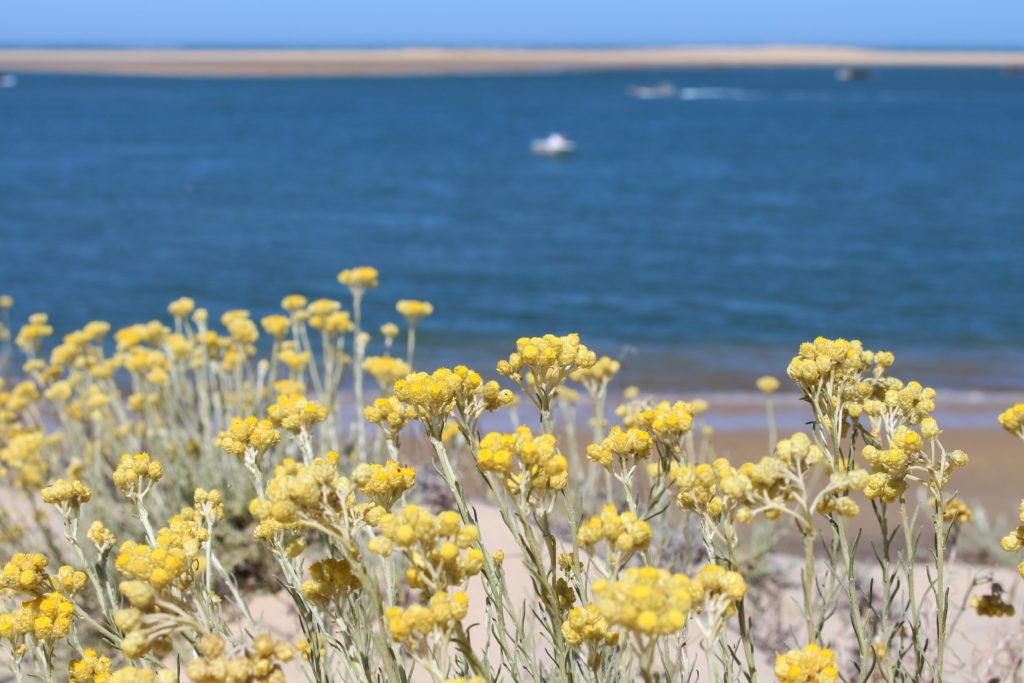
We smell the immortal before seeing it. In the sun, its small yellow flowers give off a spicy and warm smell of curry.
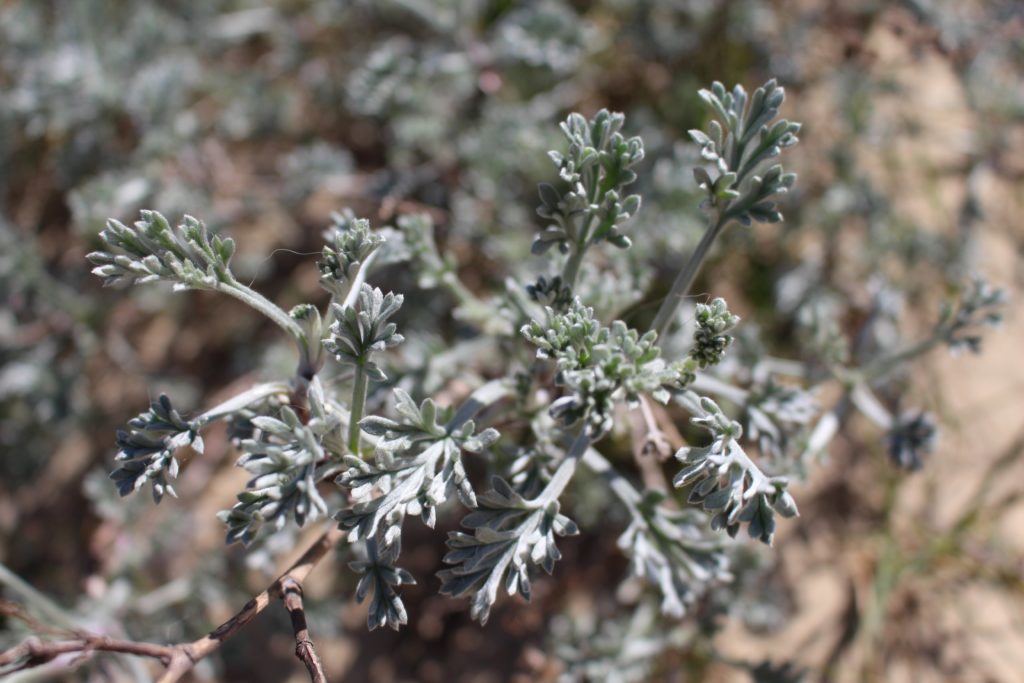
Lloyd's Mugwort
Common name : Lloyd's Mugwort
Latin name : Artemisia maritima
Family: Asteraceae
Flowering: July to September
Vegetative characters: Endemic to the Atlantic coast. This plant lives on the sand of the Atlantic coast, from Finistère to Spain. It reaches about forty centimeters in height and forms bushes. Its many flowers are small and their color varies from yellow to reddish.
Its leaves have silvery and green hues. When the plant is young, the leaves are very hairy, then become glabrous.
By its formation in tufts, Lloyd's Mugwort very easily stops the sand, which then accumulates at its base.
Two-rayed lizard
Common name : Two-rayed lizard
Latin name: Lacerta bilineata
Family: Lacertidae
Characteristics : This reptile can grow up to 40 cm long, making it the 2e largest lizard in France. Her dress of variable color, always presents a more or less bright green tint, spotted with black. Juveniles and some females usually present two white latero-dorsal lines and some brown spots. The belly is uniform yellow. The apple-green male is particularly recognizable by his blue throat, which he sports during the breeding season.

This lizard is most often found in areas of scrub, but it can be observed in a wide variety of environments, provided there is plenty of sunlight.

Ring-necked Plover
Common name : Ring-necked Plover
Latin name: Charadrius alexandrinus
Family: Charadriidae
Characteristics : The Ring-necked Plover is a very discreet wader, which lives on the top of beaches. It is distinguished from other adult plover species by its dark collar, interrupted on the chest, its legs and its dark colored beak. It forages on the sea leash, and pursues insects in the dune vegetation at high tide.
It nests on the sand, in a small basin. Its eggs merge with the sand, making them very susceptible to trampling. The slightest disturbance is fatal for the broods and puts the fragile populations of this bird a little more in danger. Hence the need to keep your dog on a leash in natural spaces.
Swiss snake
Common name : Swiss snake
Latin name: Natrix helvetica
Family: Natricidae
Characteristics : The Swiss snake has a color that varies from individual to individual, but is generally gray, tending to greenish or brownish, with black vertical bars on the flanks. Its belly is light in color. His pupils are round. In adulthood, this snake measures between 60 to 110 cm. Non-poisonous and completely harmless, this one goes out during the day to hunt; she knew how to adapt her method of movement in the sand.

On the Dune du Pilat, it is easy to find the traces of its passage: it leaves behind beautiful arabesques.

European hare
Common name : European hare
Latin name: Lepus europeaus
Family: Leporidae
Characteristics : Mammals are not very common on the dune because of a restricted habitat: few hiding places. Nevertheless, some have managed to find their places there, like the common hare, mainly thanks to the embryonic dunes which offer them some dense areas of vegetation to hide and find food. It feeds mainly on grasses but also on young tree shoots.
The regulations requiring dogs to be kept on a leash on the Dune du Pilat site prevent any disturbance to wildlife.
The great fire
Wild fauna and flora were severely impacted by the large-scale fire in the summer of 2022. Large and medium-sized mammals tried to flee the flames but insects and smaller animals remained trapped. Since then, nature has gradually regained its rights.
Gorse
Common name : Gorse
Latin name:Ulex europaeus
Family: Fabaceae
Flowering: from February to June
Vegetative characters: This species is recognizable, with its leaves transformed into thorns and its pretty golden yellow flowers. This metamorphosis represents an adaptation both against drought and against herbivores. It grows in the moors and undergrowth.
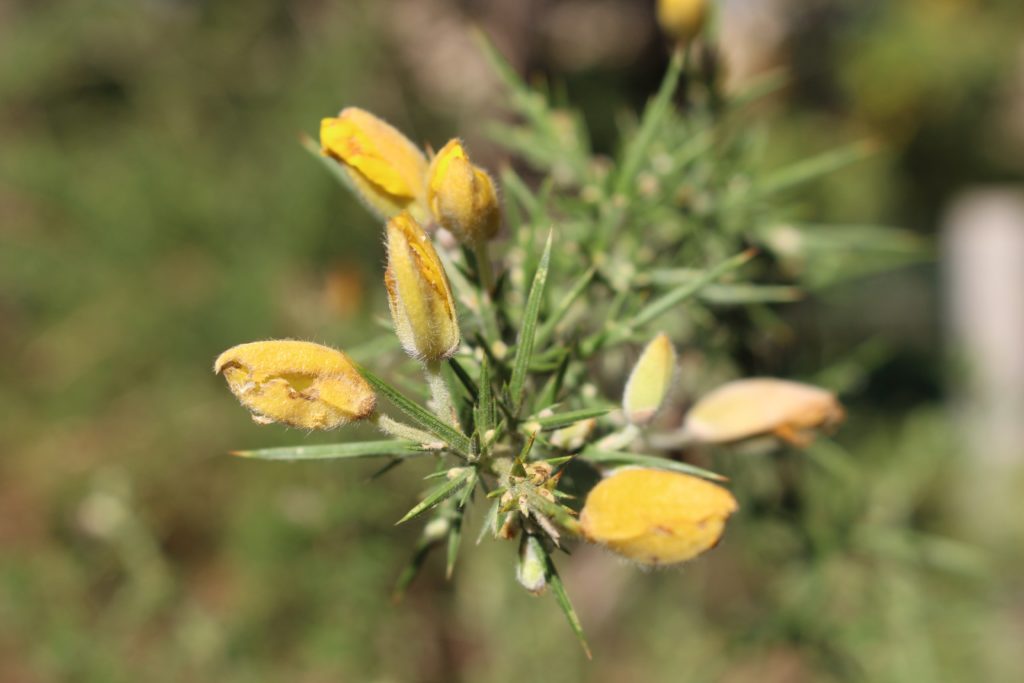
Under favorable conditions gorse can flower all year round.

Scotch broom
Common name : Scotch broom
Latin name: Cytisus scoparius
Family: Fabaceae
Flowering: from April to July
Vegetative characters: This shrub, up to 3 meters tall, is part of the legume family, such as beans and alfalfa. It has small, dark green deciduous leaves and photosynthetic stems. Its flowering produces a very large quantity of yellow papilionaceous flowers, which perfume the air. In late summer its pods, about 3 centimeters in length, turn brown and burst with a snap, then scattering seeds on the ground.
It rapidly colonizes soils devoid of vegetation (after cutting or fire). But it is also found on the coastal dunes.
Common strawberry tree
Common name : Common strawberry tree
Latin name:Arbutus unedo
Family: Ericaceae
Flowering: from October to January
Vegetative characters: The arbutus is a small tree that can reach 8m high. It is abundantly present in the South-West, on sandy soils, but also all around the Mediterranean, in the maquis. Its shiny, serrated green leaves are persistent. In the fall it colors the undergrowth with the white of its bell-shaped flowers and the red of its berries. In winter, birds are closely interested in these fruits full of vitamins, at the same time ensuring the dissemination of seeds.
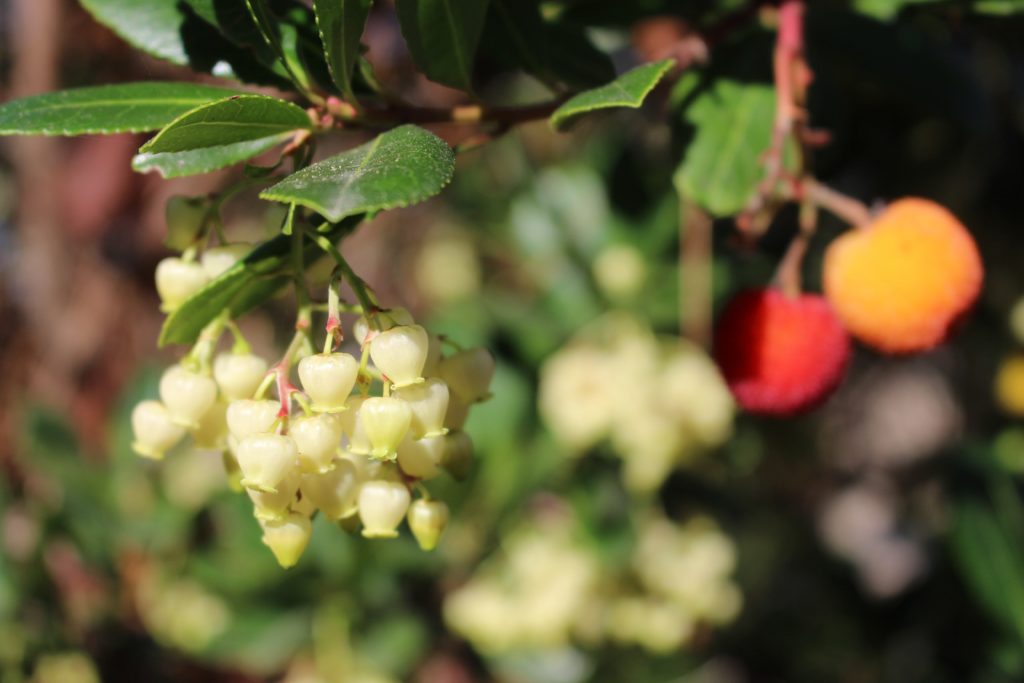
The Strawberry tree is what is called a pyrophyte plant, that is to say resistant to fire. After a fire, the strawberry tree is reborn by quickly emitting suckers from the base.
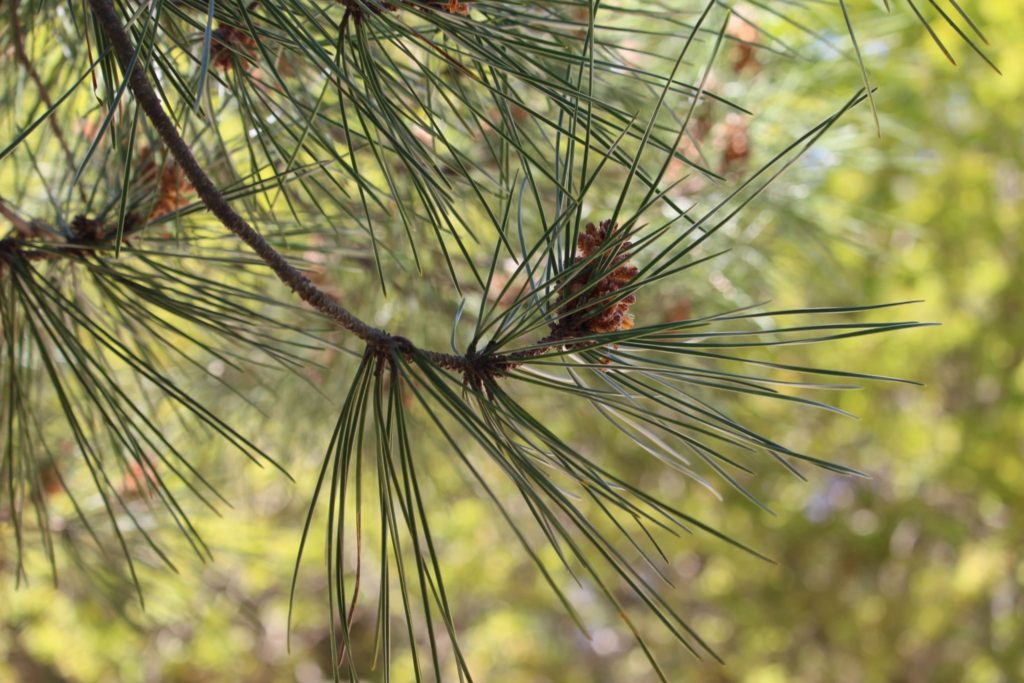
Maritime pine
Common name : Maritime pine
Latin name: Pinus pinaster
Family: Pinaceae
Flowering: in April
Vegetative characters: This conifer, also called Landes pine, is a fast growing tree (10 m in 20 years) that can reach 30 meters in height. Its bark is thick and very fissured, orange-brown to purple in color, and the twigs are brown. Its needles, grouped in pairs, measure between 12 and 25 cm. It was introduced in quantity in the Landes at the end of the 18th century.e century to fix coastal dunes and clean up marshy areas.
If you find nibbled pine nuts, lift your head and look between the branches if you don't see a red squirrel (Sciurus vulgaris).
English oak
Common name : English oak
Latin name: Quercus robur
Family: Fagaceae
Vegetative characters: In the pedunculate oak, a long peduncle attaches the acorns to the branch. The leaves are attached to the branch by a very very short petiole. This tree can reach up to 50m and live up to 1000 years. After the maritime pine, this species constitutes the most common tree in the used forest of La Teste-de-Buch. This covers 3,800 hectares of ancient dunes.

It is not uncommon to find the earth turned over at its foot, these are the traces of a heavy host: the wild boar which loves acorns.
The Pelvis between beach and ocean ...
From its top of the beach to its green and blue waters, the Basin offers a range of landscapes with a thousand faces in which live an equally multiple, sometimes even exceptional, flora and fauna.
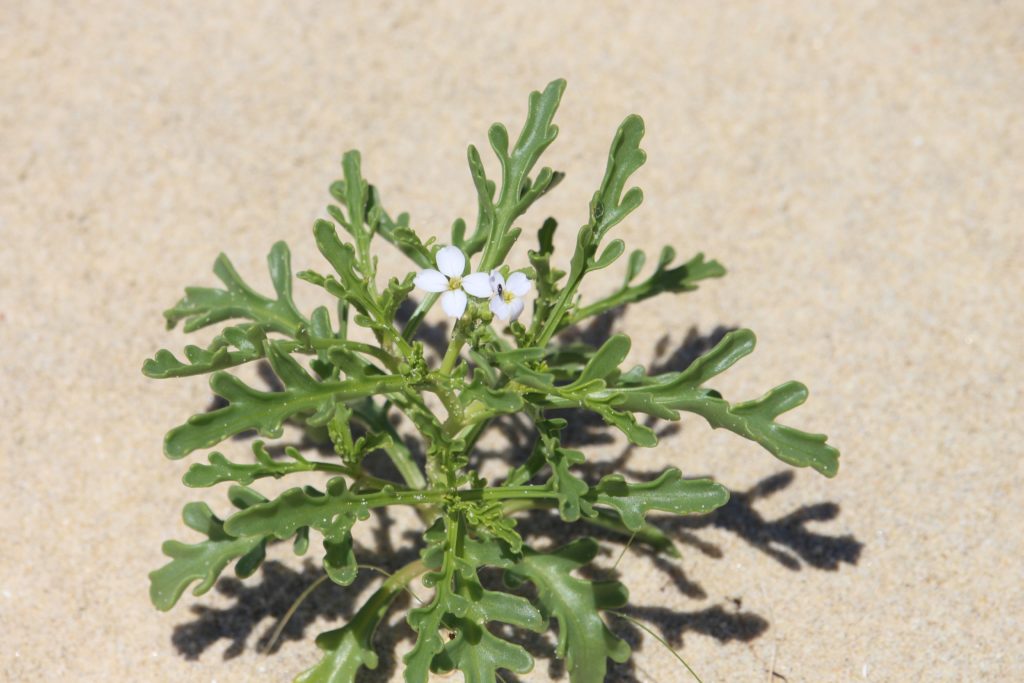
Maritime Cakilier
Common name : Maritime Cakilier
Latin name: Cakile maritima
Family: Brassicaceae
Flowering: from April to October
Plant characteristics: The maritime cakilier colors the tops of beaches with its small white, pink or purple flowers. It has a long taproot, which can measure up to 4 meters, which allows it to resist the wind, but also to draw the water necessary for its development. Likewise, its small size (10 to 45 cm) allows it not to be too exposed to the wind. Its leaves are thick. This allows it to store a lot of water. They are covered with a layer of cuticle to limit water loss by evaporation.
The cakier is able to survive the surrounding salinity by isolating the salt in part of its leaves. These then turn yellow. In short, she sacrifices part of herself in order to be able to store the salt present in too much quantity in her tissues.
Oystercatcher
Common name : Oystercatcher
Latin name: Haematopus ostralegus
Family: Haematopodidae
Characteristics : The oystercatcher is easily recognizable by its long orange-red beak, its rosy-red legs, and its black and white livery. It is also by his strident cry that he challenges us. At the level of the sea leash you will be able to detect beak marks in the sand. This bird moves in groups, of 30 to 80 individuals which move at the level of the water in very fast irregular flight.
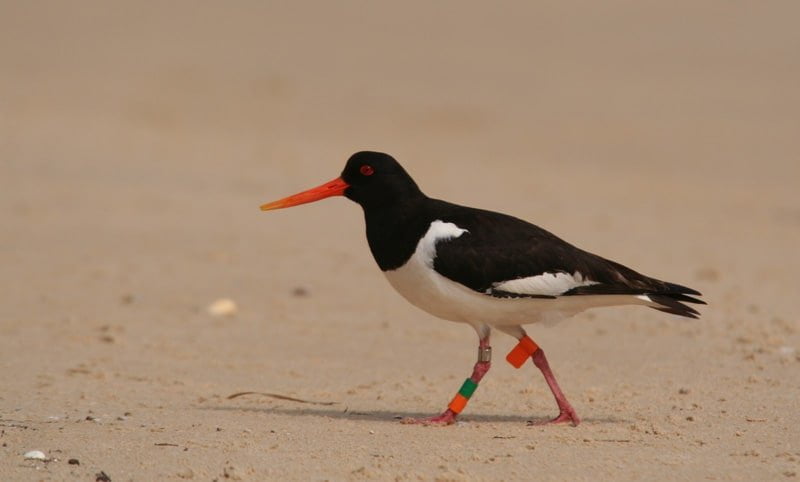
It feeds at low tide when the cockles are accessible, then regroups at high tide on the Banc d'Arguin.

Marine lugworm
Common name : Marine lugworm
Latin name: Arenicola marina
Family: Arenicolids
Characteristics : It is they who are responsible for the small twists of sand visible on the beaches. Indeed, the marine lugworm, also called "bloodworm" or "black worm", lives buried in the sand (or mud), between 10 and 40 cm deep. It builds a U-shaped gallery. On the one hand, the lugworm swallows the sand (it is said to be a "psammivore") from which it will retain food particles: bacteria, algae, protozoa ... on the other hand, it excretes the rest. These are the famous twists, composed of pure sand.
These worms can represent up to 30 % of the total amount of living organisms in a beach. The predators of the lugworm are numerous: fish and crabs in general, and especially many shorebirds.








